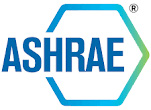Evaluation of Photocatalysis for Gas-phase Air Cleaning Part 1: Process, Technical, and Sizing Considerations
The results of a literature survey and an engineering analysis are presented that evaluate the process, technical, and sizing considerations of photocatalytic oxidation (PCO) as a commercial technology to treat (i.e., remove) low-level contaminants in feed streams of air. PCO uses the energy of photons from light sources to activate a catalyst. Upon activation, adsorbed gases, particularly molecular oxygen (O2), water vapor (H2O), and contaminant species, can participate in surface-mediated reactions that, under appropriate operating conditions, can produce and desorb product species, notably carbon dioxide (CO2) and H2O. Approximately 60 organic compounds have been studied in heterogeneous gas-phase PCO, while only a few inorganic compounds have been studied. With regard to commercial-scale applications, the present challenge is to design photocatalytic treatment devices that have low pressure drop, make efficient use of light, and employ a stable catalyst that can be readily regenerated if it becomes poisoned or deactivated. Presently, gas-phase heterogeneous photocatalysis will likely find application wherein (1) the gas-phase contaminants have been identified in a feed stream and demonstrated to be removed when the feed is passed through the PCO device and (2) reaction by-products have been studied and not found to be of concern.
